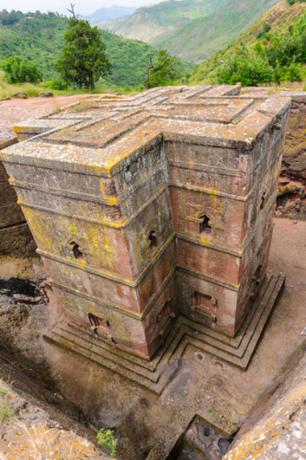The history of the kingdom of Axum is related to that of the civilizations that developed in Africa, below Egypt. That is, in the former regions of Nubia and Ethiopia. The vestiges of this kingdom date from the V century; C., but its heyday was around the middle of the fourth century d. a., when the axumitas (name that designates the inhabitants of Axum) take the kingdom Kush, their rival, to the ruin.
During the 3rd and 4th centuries, Axum conquered territories in the Arabian Peninsula, Northern Ethiopia and part from ancient Persia, becoming one of the most powerful empires of the passage from the Old Age to the Age Average. Still in the fourth century, the Ashumites destroyed the city of Meroe, capital of the Kush empire, then fragmenting this ancient political center in southern Egypt. From Kush's defeat three different kingdoms were born, the Nobatia, the Makuria and the Alodia, all of which came under the influence of Axum.
With the vast territory conquered, the kingdom of Axum came to dominate all trade routes that passed through the south of the Arabian Peninsula and through southern Arabia, through the region of Nubia and Ethiopia, which crossed the Sea Red. He also managed to obtain fertile land that made possible the agriculture and grazing of some cattle. To manage and control the flow of trade in this region, the kingdom of Axum coined its own currency as well, even establishing trade with India and China.
One of the most important events in the history of the kingdom of Axum was the conversion to Christianity of King Ezana in the 4th century, by a Christian monk of Phoenician origin, called Frumencio (who was later bishop of Axum and considered Holy). After King Ezana's conversion, the entire Ethiopian region and much of the Nubian region received strong influence of Christianity and most of the population also converted, making Axum an eminently empire. Christian.

The carved rock churches in Axum, Ethiopia, are now considered a World Heritage Site.
One of the characteristics of this phase is the construction of the famous eleven churches, which were carved in rocks, in the ground. These Churches are considered a World Heritage Site and are part of the tradition of the Ethiopian Orthodox Church. In addition to the Churches, several other buildings in the kingdom of Axum are notable, such as the obelisk, immense stone towers, tombs and other temples in the time before the conversion to Christianity.
The kingdom of Axum remained imposing until the 11th century AD. C., a time when Islam had already expanded across the Arabian Peninsula and conquered much of the territory that the Axumites dominated.
By Me. Cláudio Fernandes
Source: Brazil School - https://brasilescola.uol.com.br/historiag/o-reino-axum.htm
